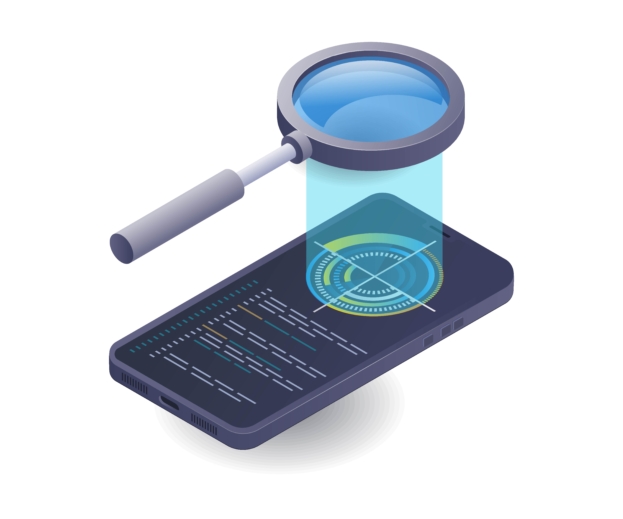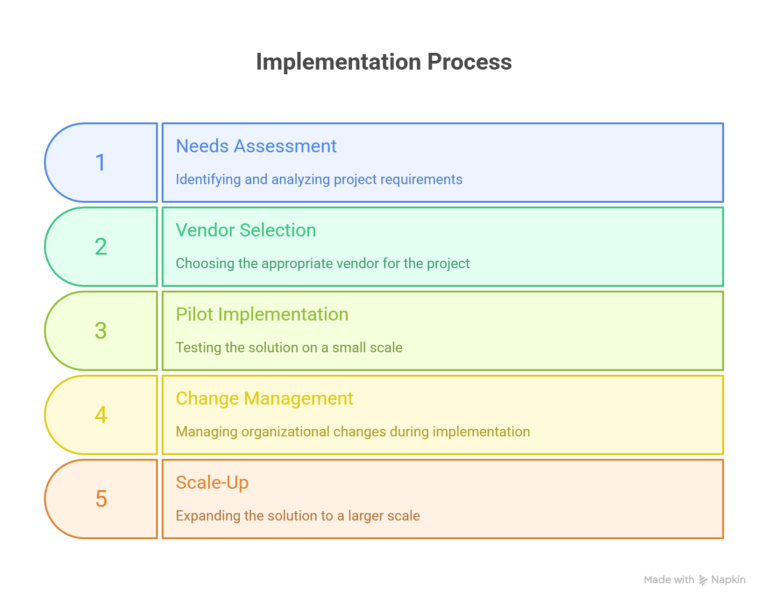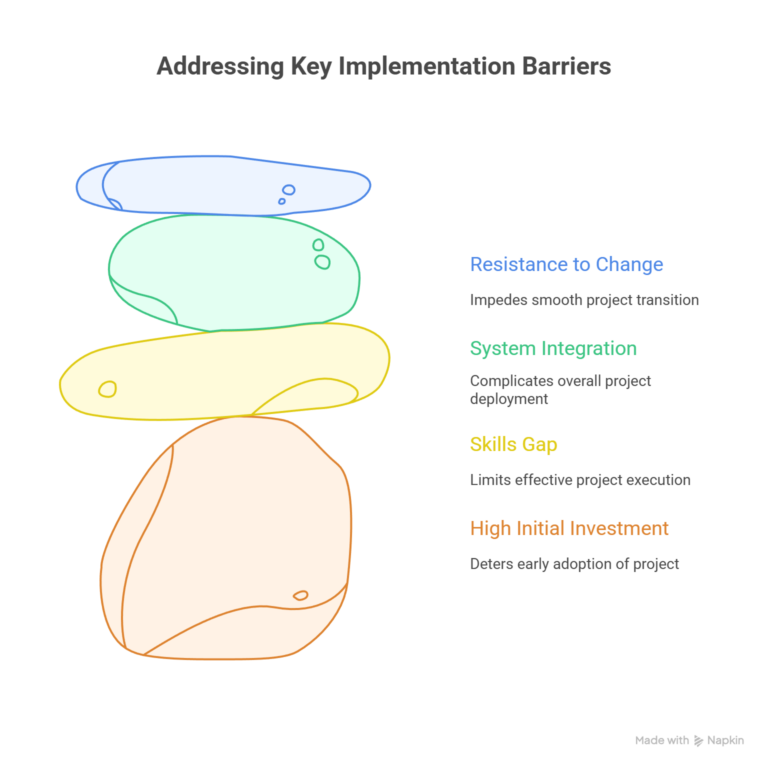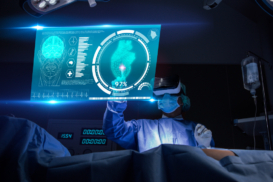Greetings! I'm Aneesh Sreedharan, CEO of 2Hats Logic Solutions. At 2Hats Logic Solutions, we are dedicated to providing technical expertise and resolving your concerns in the world of technology. Our blog page serves as a resource where we share insights and experiences, offering valuable perspectives on your queries.

Quality has never mattered more in manufacturing. Today’s customers expect perfection, whether they’re buying smartphones, cars, or pharmaceuticals. A single defect can trigger recalls, damage brand reputation, and cost millions in losses.
That’s why factories worldwide are moving away from traditional inspection methods and embracing 3D visual inspection powered by artificial intelligence. This technology is fundamentally changing how manufacturers detect defects, reduce waste, and maintain competitive advantage.
In this guide, you’ll discover exactly how 3D visual inspection works, why it outperforms older methods, and how to implement it successfully on your production line.
The Problems with Traditional Quality Control
Let’s be honest: traditional inspection methods are struggling to keep up.
Manual inspection relies on human workers examining parts visually or with basic measuring tools. While experienced inspectors can spot obvious flaws, this approach has serious limitations:
- Inconsistency: Human attention fluctuates throughout shifts, leading to missed defects
- Speed bottlenecks: Manual checks slow production, especially with complex parts
- High labor costs: Quality inspection requires skilled workers, often in short supply
- Limited detection: Humans can’t reliably spot microscopic defects or measure complex 3D geometries
2D vision systems improved speed but introduced new problems. These camera-based systems capture flat images, missing critical information:
- Hidden defects on curved or internal surfaces go undetected
- No depth measurement means dimensional accuracy issues slip through
- Lighting variations cause false positives and negatives
- Inability to inspect shiny or transparent materials effectively
Real-world impact: An automotive supplier discovered their 2D system missed 18% of weld defects because it couldn’t see depth variations. These defects only appeared during final assembly, costing $2.3 million annually in rework and delays.
Traditional methods simply can’t meet modern quality standards, especially as products become more complex and tolerances tighter.
What Is 3D Visual Inspection?
3D visual inspection uses advanced cameras and sensors to capture complete three-dimensional representations of parts and products during manufacturing. Instead of flat images, the system creates detailed 3D models showing every surface, dimension, and feature.
Think of it like the difference between a photograph and a sculpture. A 2D photo shows what something looks like from one angle. A 3D model lets you examine it from every direction, measure distances, and detect issues that aren’t visible from a single viewpoint.
The Game-Changing Difference
While 2D systems capture width and height, 3D visual inspection adds depth, the critical missing dimension:
- Complete coverage: Examines all surfaces, including hidden areas and complex geometries
- True measurements: Calculates actual dimensions, volumes, and distances with micrometer precision
- Defect detection: Identifies scratches, dents, warping, and dimensional deviations invisible to 2D systems
- Material flexibility: Works reliably on reflective, transparent, and dark surfaces that confuse traditional cameras
Example: In electronics manufacturing, 3D inspection can measure the exact height and shape of solder joints on circuit boards. A joint that’s too tall might short-circuit; too short means weak connections. 2D systems see both as acceptable, but 3D inspection catches the difference before the board ships.
Technologies Powering 3D Inspection
Several technologies work together to make 3D visual inspection possible:
3D Cameras and Scanners create depth maps using techniques like:
- Structured light projection (patterns of light reveal surface contours)
- Laser triangulation (laser lines scan across surfaces)
- Time-of-flight sensors (measure how long light takes to bounce back)
Machine Vision Software processes the 3D data:
- Compares scanned parts against CAD models or master samples
- Identifies deviations, defects, and dimensional variations
- Generates pass/fail decisions in milliseconds
AI and Deep Learning Algorithms enhance detection:
- Learn to recognize defect patterns from training data
- Adapt to new defect types without reprogramming
- Reduce false positives by understanding normal variation
Real-time Processing enables inline inspection:
- Systems analyze parts at production speeds (often 60+ parts per minute)
- Instant feedback allows immediate quality corrections
- Integration with production controls enables automatic rejection of defective parts
Warning: Not all 3D systems are equal. Resolution, speed, and accuracy vary significantly between vendors. Always request demonstrations with your actual parts before purchasing.
Most Impactful Use Cases

Automotive Manufacturing: Weld Seam and Paint Inspection
Automotive manufacturers were early adopters of 3D visual inspection, and for good reason.
Weld inspection traditionally required destructive testing, cutting apart sample welds to check penetration. 3D systems now inspect 100% of welds non-destructively:
- Measure bead height, width, and consistency
- Detect porosity, cracks, and incomplete fusion
- Verify penetration depth using X-ray combined with 3D surface data
A major German automaker reduced weld defects by 67% after implementing 3D inspection, while eliminating $4.8 million in annual scrap costs.
Paint quality requires detecting micro-defects like orange peel, dirt contamination, and uneven coating:
- 3D scanners measure surface roughness at the microscopic level
- Detect runs, sags, and thin spots invisible to human inspectors
- Ensure consistent finish quality across the entire vehicle body
Electronics: PCB and Solder Joint Verification
Electronics manufacturing demands extreme precision; defects measured in micrometers can cause product failures.
Printed circuit board inspection catches issues like:
- Misaligned components (even 0.1mm misplacement matters)
- Incorrect component orientation
- Missing parts or wrong part numbers
- Solder bridge detection between adjacent pins
Solder joint analysis is where 3D inspection truly shines:
- Measures the exact volume of solder (too much or too little both cause failures)
- Detects voids inside joints that weaken connections
- Identifies cold solder joints with poor wetting
Real data: A smartphone manufacturer reduced field failures by 43% after implementing 3D solder inspection, saving an estimated $12 million annually in warranty costs.
Pharmaceuticals: Packaging Integrity
Pharmaceutical companies face strict regulatory requirements and zero tolerance for defects that could compromise patient safety.
3D inspection verifies:
- Blister pack sealing completeness and uniformity
- Tablet/capsule dimensions and shape consistency
- Fill levels in vials and ampoules
- Label placement accuracy
- Tamper-evident seal integrity
Compliance advantage: 3D systems generate detailed documentation for every inspected unit, simplifying FDA audits and regulatory compliance.
Pro Tip: Start with your highest-value or highest-risk products. The ROI appears faster, and you’ll gain experience before expanding to other lines.
Implementation Essentials
Successfully deploying 3D visual inspection requires careful planning. Here’s your roadmap:

Step 1: Needs Assessment (2-4 weeks)
Identify exactly what you need to inspect:
- Which defects are most costly or common?
- What are your required inspection speeds?
- What accuracy and resolution do you need?
- What’s your budget range?
Action item: Document your top 5 quality problems with photos and cost data. This becomes your requirements specification.
Step 2: Vendor Selection (4-8 weeks)
Don’t just compare spec sheets. Evaluate vendors on:
- Proven experience in your specific industry
- Demo performance with YOUR actual parts (insist on this)
- Integration capabilities with your existing production systems
- Support and training offerings
- Software update policies and future-proofing
Get at least three quotes and check customer references thoroughly.
Step 3: Pilot Implementation (8-12 weeks)
Start with one production line or cell:
- Install the system during planned downtime
- Run in parallel with the existing inspection initially
- Compare results and tune system parameters
- Train operators and quality staff thoroughly
Warning: Expect a learning curve. Budget 4-6 weeks for optimization before reaching full performance.
Step 4: Change Management
Technology is only half the battle. Your people make it work:
Address workforce concerns directly:
- Frame 3D inspection as a tool that makes their jobs easier, not a replacement
- Emphasize how it handles tedious, repetitive tasks
- Show how it helps them catch problems earlier
- Involve operators in the pilot phase
Training investment: Plan for 40+ hours of training per operator, including hands-on practice and troubleshooting scenarios.
Step 5: Scale-Up (3-6 months)
After pilot success, expand systematically:
- Roll out to similar production lines first
- Document best practices and lessons learned
- Standardize configurations across lines
- Build internal expertise for support
Pro Tip: Create an internal champion team, quality engineers who become 3D inspection experts, and support other lines during rollout.
Ready to implement 3D visual inspection to transform quality control?
Business Benefits: The Numbers That Matter
Let’s talk return on investment. Here’s what manufacturers are actually seeing:
Defect Reduction: 40-70%
Most facilities report catching 40-70% more defects with 3D inspection versus previous methods. That directly translates to:
- Fewer field failures and warranty claims
- Reduced rework and scrap
- Better customer satisfaction scores
Example: An aerospace component manufacturer reduced escape defects (defects reaching customers) from 850 ppm to 120 ppm within six months.
Production Speed: 15-30% Improvement
Automated 3D inspection is faster than manual checks:
- Typical inspection time drops from 2-3 minutes to 10-30 seconds per part
- No bottlenecks from inspector availability
- 24/7 consistent operation
Regulatory Compliance
For regulated industries, the documentation advantages are priceless:
- Automatic record-keeping for every inspected part
- Traceability from raw material to finished goods
- Audit-ready reports at the click of a button
- Objective, repeatable quality data
Real-World Results

Metal Fabrication Plant
Challenge: A metal stamping facility struggled with dimensional variations, causing assembly problems at their customer’s plant. Manual gauge inspection caught only 60% of out-of-tolerance parts.
Solution: Implemented 3D laser scanning on three high-volume production lines, inspecting 100% of critical dimensions.
Results:
- Defect detection rate improved from 60% to 96%
- Customer complaints dropped by 78%
- Scrap costs reduced by $340,000 annually
- The system paid for itself in 14 months
Key Barriers & Solutions

Barrier 1: High Initial Investment
Reality: Entry-level 3D inspection systems start around $50,000; advanced systems can exceed $200,000.
Solutions:
- Start with the highest-ROI applications first
- Consider leasing or financing options
- Look for government incentives for automation
- Calculate the total cost of quality (many find they’re already spending more on defects)
Barrier 2: Skills Gap
Reality: Your team may lack experience with 3D vision and AI systems.
Solutions:
- Choose vendors offering comprehensive training
- Partner with technical colleges for ongoing education
- Hire one expert to build internal capability
- Start simple, master basic 3D inspection before adding advanced AI features
Pro Tip: Many vendors offer “managed services” where they handle system programming and optimization remotely during your ramp-up period.
Barrier 3: System Integration
Reality: 3D inspection must connect with MES, ERP, and production control systems.
Solutions:
- Specify integration requirements during vendor selection
- Use industrial communication standards (OPC UA, MQTT)
- Budget for integration engineering (typically 10-15% of system cost)
- Consider middleware platforms that simplify connections
Barrier 4: Resistance to Change
Reality: Operators and quality staff may resist new technology.
Solutions:
- Involve them early in the selection and pilot phases
- Demonstrate how it makes their jobs easier
- Celebrate early wins publicly
- Provide adequate training time without pressure
What’s Next: The Future of Manufacturing Inspection
3D visual inspection is just the beginning. Here’s what’s coming:
Predictive Quality Analytics
AI systems will soon predict defects before they occur:
- Analyze patterns in inspection data to identify process drift
- Alert operators to adjust machine parameters proactively
- Prevent defects rather than just catch them
Timeline: Early adopters are already piloting predictive models; expect widespread adoption by 2027.
Complete Automation Integration
3D inspection will become seamlessly integrated with:
- Robotic material handling
- Automated packaging systems
- Self-adjusting production equipment
- Digital twin simulations
Industry 4.0 Smart Factories
In the smart factory vision:
- Every product is 100% inspected in real-time
- Quality data flows instantly to all relevant systems
- Machine learning continuously improves detection
- Remote experts can diagnose issues via digital models
The competitive advantage: Manufacturers who master 3D inspection now will lead their industries in the automation-driven future.
Ready to explore 3D visual inspection for your facility?
Conclusion
The manufacturing landscape is clear: traditional inspection methods can no longer deliver the speed, accuracy, and consistency that modern production demands. 3D visual inspection isn’t just an upgrade; it’s a fundamental shift in how we approach quality control.
From automotive plants catching weld defects to electronics manufacturers ensuring perfect solder joints, the results speak for themselves: 40-70% fewer defects, faster production speeds, and ROI achieved in 12-24 months.
The question isn’t whether 3D inspection will become standard in your industry; it’s whether you’ll be an early adopter who gains a competitive advantage or play catch-up later.
Your next step is simple: Start with one high-impact application. Run a pilot. Prove the ROI. Then scale systematically across your operation.
The technology is proven. The benefits are measurable. The time to act is now.
Ready to get started?
FAQ
How accurate is 3D visual inspection compared to manual inspection?
3D systems typically achieve accuracy of 0.01-0.1mm (depending on the technology), significantly better than manual inspection's typical 0.5-1mm. More importantly, 3D systems maintain consistent accuracy 24/7, while human accuracy varies with fatigue, lighting, and experience.
Can 3D inspection work at high production speeds?
Yes. Modern 3D inspection systems can analyze 60-120 parts per minute for typical applications, with some specialized systems reaching 300+ parts per minute. Speed depends on part complexity and required resolution.
What types of defects can 3D inspection detect?
3D systems excel at detecting dimensional variations, surface defects (scratches, dents, warping), missing features, shape deviations, assembly errors, and coating thickness issues. They struggle with internal defects (requiring X-ray) and some color-based defects.
Will 3D inspection eliminate the need for quality inspectors?
No. 3D inspection handles repetitive, objective measurements but quality engineers remain essential for root cause analysis, process improvement, supplier quality, and handling exceptions. Expect to redeploy inspectors to higher-value tasks rather than eliminate positions.
Table of contents
- The Problems with Traditional Quality Control
- What Is 3D Visual Inspection?
- Technologies Powering 3D Inspection
- Most Impactful Use Cases
- Implementation Essentials
- Business Benefits: The Numbers That Matter
- Real-World Results
- Key Barriers & Solutions
- What's Next: The Future of Manufacturing Inspection
- Conclusion

Related Articles







